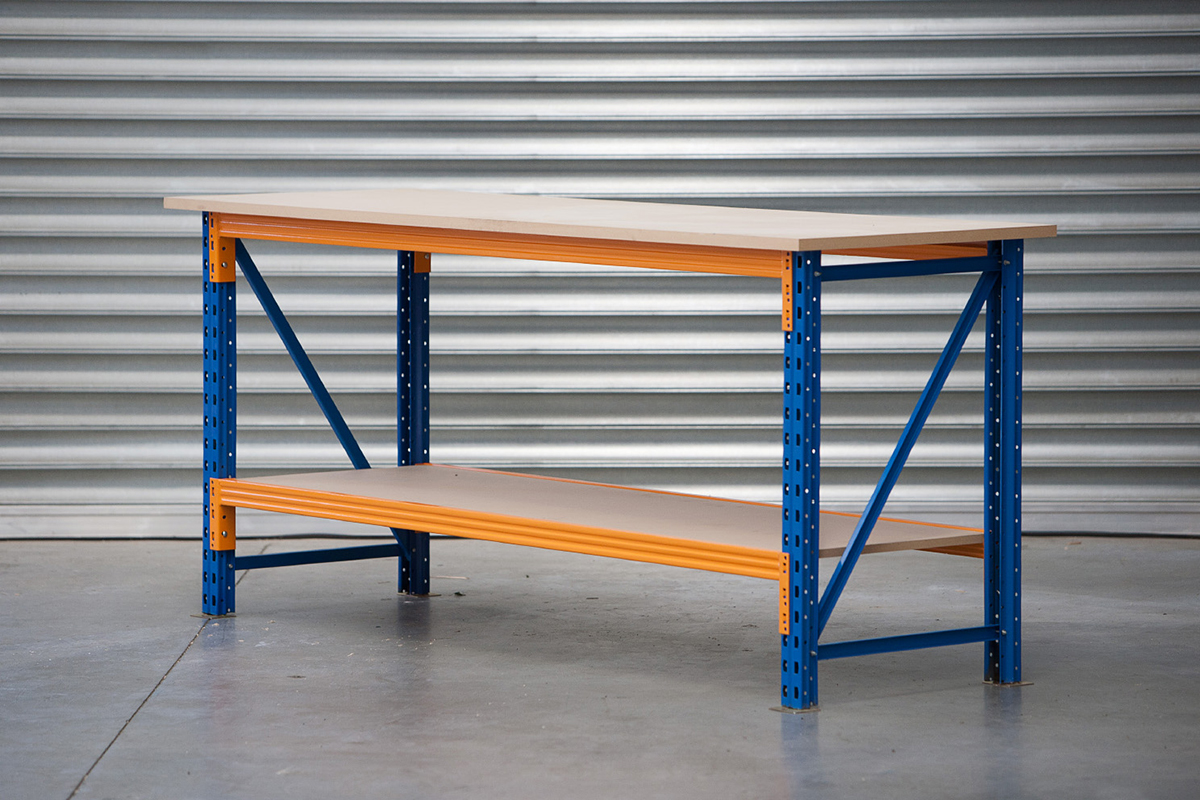
1 Workbench Types
There are many types of workbenches available. The best one for you will be the one that suits your needs. Think about how you will use your tool bench. You will use your tool bench for metalworking, woodworking, gardening, and other purposes. Are you looking for a heavy duty workbench? Do you need a storage-equipped workbench? Do you prefer a table with drawers or a desk? Do you need to store your tools and equipment on a workbench? You should consider purchasing an electronic c power strip or if you intend to work with equipment that needs power. Learn more about the various types of tool benches that are available.
Workbench Tables
A Work Bench NZLinks to an external site. table is a tabletop made of metal or hardwood, and placed on top of sturdy wooden or metal legs. The traditional workbench is most versatile and popular because of its sturdy design and simple construction. The workbench table design has very few storage options. Some workbench tables have one open shelf under the work surface. Workbench tables are best suited for tasks that require a clamp or grip.
Workbench Cabinets
Cabinet-style workbenches are more versatile than workbench tables. They offer a lot of storage making them a great choice for handymen with lots of tools and equipment. You can access your tools and equipment easily with built-in storage such as cabinets, drawers, and shelving. Cabinet workbenches are usually made of metal and can be more expensive than other styles. However, the investment may be worth it because you might be able to skip other storage options that would otherwise be required.
Pegboard and workbenches
Workbenches with pegboard back offer a lot of organization and functionality in your workspace. This tool bench has a board running across its back that allows you to hang your tools and equipment. It also provides a backboard to prevent supplies from rolling off your bench’s back.
Portable Workbenches
Mobile workbenches are easy to move around. There are two types of portable benches, folding workbenches or rolling workbenches. The folding workbenches are small and compact, but they can still be used for many common tasks. Rolling workbenches or mobile workbenches will provide the same sturdy structure as a regular workbench but with casters attached either to the base or legs. These wheels allow you to move the tool bench around easily and lock it securely when needed.
Wall-mounted workbenches
Wall-mounted workbenches can be used in small spaces with limited floor space. Wall-mounted tool benches have the advantage of being able to hang them at any height that you choose, making it easier to work in cramped spaces. Wall-mounted workbenches won’t be able support the same weight and wear as standard workbenches with heavy-duty legs.
2 Workbench Size
Workbench Height
When choosing a workbench, it is important to consider the height of your work surface. Most workbenches have a work surface that is 33 to 36 inches high. Fixed-height workbenches are generally slightly more expensive than adjustable-height models. However, you will get what you see because these models cannot be adjusted in height. Adjustable height workbenches can be adjusted to fit different sizes and abilities. This makes it easy for people to use the same workbench comfortably.
Workbench Width
A tool bench’s work surface is crucial. There are many options for workbenches. They can be as small as two feet in width and as large at ten feet in height. To ensure that your space can hold your choices, measure it before you go. Remember that bigger is not always better when it comes to workbenches. You don’t have to compensate for a 10-foot workbench when a smaller workbench is more than adequate.
3 Workbench Materials
A sturdy work surface and a solid foundation are the two most important aspects to look for in a tool bench. For a uniform distribution of weight, a workbench should have four solid, sturdy legs or a sawhorse-base base. The first step to choosing the right material for your workbench is to determine what tasks you will be performing. These are the three most popular workbench materials:
- Wood workbenches can withstand heavy weights, marring, heat exposure, impacts, and other stresses. Wood-surface workbenches, which are made of thick, solid maple, are great for all-purpose work including repair and maintenance.
- These lightweight and affordable plastic workbenches can be used to repair electrical appliances. These solid plastic tops are coated with durable laminate to protect against scratches and stains. A plastic laminate work surface is ideal for projects that include light assembly, packaging, and office use.
- Steel workbenches have the best durability and are built to withstand years of heavy usage thanks to strong welding and underside reinforcements which provide greater weight capacities. If you plan to work with solvents and oil, heavy-duty steel is the best choice.
Our Workbench Top Materials Guide has more information.
4 Workbench Add-Ons
After you have chosen the best WorkbenchLinks to an external site. for your space and you have it installed, you can start to customize it! It can be just as fun as picking the right workbench base. Your workbench base is what you need, but accessories make it more usable.
- Metal tool boxes are sturdy, reliable and retro storage options for your most important tools. Although they are heavier and more costly than plastic toolboxes, metal toolboxes can withstand heavy-duty use.
- Lightweight plastic tool boxes are a great way to keep your tools organized and cost-effective. Plastic tool boxes are a great option for casual use, and they will last for many homeowner’s uses. Visit our Tool Box Buying guide for more information.
- Parts storage can be crucial to keep odds and ends right where they are needed. It is easy to organize small parts and locate them quickly with compartments and drawers. You can also choose a larger cabinet or tool chest if you need more storage.
- The workbench stool is almost as important than the workbench itself. When you are working on a project, you don’t want to have to sit on your workbench.
- Pegboard can be used to create vertical storage space behind your workbench. It can be used to create additional shelving, hang tools within arm’s reach, and store small parts.
The workbench is the most used tool in a garage or shop. It is crucial to choose a workbench that is right for you and the type of project you are planning to tackle. Your bench selection will be personal to you, but it is important to consider type, size and material when shopping for a workbench.

